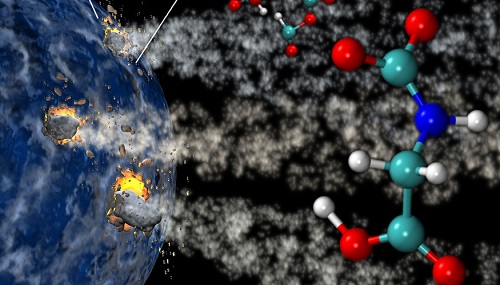By now, we probably all know that there was once significant quantities of water on the Martian surface and, although the red planet is bone dry by terrestrial standards, water persists as ice just below the surface to this day.
Now, according to a series of new papers published in the journal Science, NASA’s Mars Science Laboratory rover Curiosity has found that the Mars topsoil is laced with surprisingly high quantities of the wet stuff.
Curiosity landed inside Gale Crater near the planet’s equator on Aug. 6, 2012, with the explicit mission to seek out habitable environments for life, past and present. Using a sophisticated suite of instrumentation, the rover is gradually piecing together the geological and habitable history of its small corner of Mars.
During science operations at the geologically interesting location called “Rocknest,” Curiosity scooped a sample of fine regolith (pictured top) and dumped it into its on-board chemical laboratory on Sol 71 (Oct. 17, 2012). After analyzing the very first scoop of material from a wind-blown ripple in the soil, it appears that Curiosity’s Sample Analysis at Mars (SAM) had detected something quite profound.
“One of the most exciting results from this very first solid sample ingested by Curiosity is the high percentage of water in the soil,” said Laurie Leshin, Dean of Science at the Rensselaer Polytechnic Institute, N.Y., and lead author of one of the studies focusing on SAM analysis of Mars ‘fines.’
“About 2 percent of the soil on the surface of Mars is made up of water, which is a great resource, and interesting scientifically.”
Scoop, Sieve, Cook
Once scooped out of the ground by the rover’s robotic arm-mounted scoop (called the Collection and Handling for In-Situ Martian Rock Analysis, or, simply, CHIMRA), a small amount of the powder was sieved and dropped into SAM where it was heated to 835 degrees Celsius (1,535 degrees Fahrenheit). SAM then used its gas chromotograph, mass spectrometer and tunable laser spectrometer to identify the chemicals contained within the sample and the ratios of the different isotopes of elements contained within.
When heated, the instrument detected the abundance of water plus significant quantities of carbon dioxide, oxygen and sulfur compounds, according to the researchers. Carbonate materials — compounds that form in the presence of water — were also identified.
Though highly toxic to human biology, some microbes are known to use the oxidizing chemical for energy. This finding intensified the debate over whether hypothetical microbes on Mars could metabolize perchlorates in a similar way.
Unraveling Mars’ Chemical History
“This work not only demonstrates that SAM is working beautifully on Mars, but also shows how SAM fits into Curiosity’s powerful and comprehensive suite of scientific instruments,” said Paul Mahaffy, principal investigator for SAM at NASA’s Goddard Space Flight Center, Md. “By combining analyses of water and other volatiles from SAM with mineralogical, chemical, and geological data from Curiosity’s other instruments, we have the most comprehensive information ever obtained on Martian surface fines. These data greatly advance our understanding of surface processes and the action of water on Mars.”
Analysis of the isotope ratios in the Rocknest fines revealed very similar ratios to the gases sampled in the atmosphere by Curiosity, indicating that surface material interacts heavily with the atmosphere.“This is the first solid sample that we’ve analyzed with the instruments on Curiosity,” said Leshin. “It’s the very first scoop of stuff that’s been fed into the analytical suite. Although this is only the beginning of the story, what we’ve learned is substantial.”
“The isotopic ratios, including hydrogen-to-deuterium ratios and carbon isotopes, tend to support the idea that as the dust is moving around the planet, it’s reacting with some of the gases from the atmosphere,” said Leshin.
“Mars has kind of a global layer, a layer of surface soil that has been mixed and distributed by frequent dust storms. So a scoop of this stuff is basically a microscopic Mars rock collection,” she said. “If you mix many grains of it together, you probably have an accurate picture of typical Martian crust. By learning about it in any one place, you’re learning about the entire planet.”
Organics?
Another key target for SAM is organic compounds and, although the instrument appears to have detected some evidence of organic chemistry in this first soil sample, the detection is likely Earth-bound contamination. Besides, organic chemistry existing so close to the surface in a wind-blown sample isn’t thought to be likely.
“We find that organics are not likely preserved in surface soils, which are exposed to harsh radiation and oxidants,” said Leshin. “We didn’t necessarily expect to find organic molecules in the surface fines, and this supports Curiosity’s strategy of drilling into rocks to continue the search for organic compounds. Finding samples with a better chance of organic preservation is key.”
The discovery of this surprising amount of water presents an interesting twist in our odyssey of Martian discovery, a fact not lost on the SAM researchers.
“We now know there should be abundant, easily accessible water on Mars,” she added. “When we send people, they could scoop up the soil anywhere on the surface, heat it just a bit, and obtain water.









